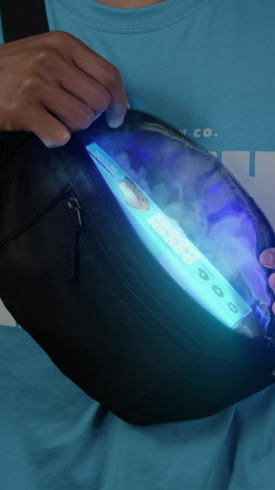With 5.17 billion social users worldwide ‘social’ isn’t just the leading channel for brand visibility, it’s fast becoming the leading channel for performance, conversation and cultural relevance.
But posting without a strong social strategy is like writing with a broken pencil. You won’t leave a mark.
Your strategy is your guide, taking you from random social posts duplicated across all channels to a social feed that targets your audience where they are.
What exactly is a social strategy?
A social strategy is so much more than what you post: it’s the why, where, when, and for who. Your strategy connects the dots between business goals and attention-grabbing content. It tells you:
- Who you're talking to
- What you should be saying
- Where you should be saying it
- And how to measure if it’s working
No more random posts. No more “let’s just try this.” It’s structure + storytelling + strategy = results.
To get it right, takes time, patience, and a team of social natives who have years of experience in creating game-changing strategies.
But what about trending topics? What if we go viral? How about negative press? It’s important to know that social strategy isn’t fixed, it’s not about prescribing what is posted when just for efficiency reasons. A true social-first strategy flexes and moves. It provides the tools to quickly respond to new trends, builds in tactics to take advantage of viral content, and provides guidelines on dealing with both positive and negative attention.
Spin 360 degrees with our social-first strategy.
Why you need a social strategy yesterday
Social strategies go beyond getting you closer to your marketing goals. They make getting there so much easier and so much more intentional.
Everyone will know what’s going live, when and where. They’ll know who’s in charge of social photography and when to expect posts from your influencers.
● Joined-up thinking: No more silos, or “who’s doing what?!” bedlam. It will be teams working towards the same goal.
● Better Targeting: Zero in to nail the voice, value and relevancy.
● Long-term planning: Socials should grow with your business, not just light up a moment.
● Creative flexibility: Built in agility allows you to take advantage of successful campaigns or fine tunes ones that aren’t hitting home.
What a creative-first social strategy gives you
Socials are a visual medium, so you’ve got to catch the eye before you make an emotional connection. A creative-first social strategy knows that traffic isn’t the only party in town. It looks at:
● Brand visibility: Get seen, remembered, and talked about.
● New audiences: Tap into new communities, trends, and new corners of the internet. Hello, fresh eyeballs.
● Authenticity: Lean into storytelling, UGC, and behind-the-scenes moments that build trust.
● Revenue: From Instagram to TikTok, social content converts. Scroll, tap, buy.
● Engaged audience: Posting with purpose gives your followers a reason to double-tap, comment, and share, whether paid or organic.
● Data: Every click, share, and save is a data point. Learn what resonates and who’s watching, so you can keep adjusting and keep winning.
Get creative with Spin strategies.
The fun bit: let’s build a successful social strategy
What you include in a social marketing strategy depends on your business and your goals. Each strategy is unique. That’s what makes it a strategy instead of a generic, cookie cutter social plan.
At Spin, we tackle a strategy by looking at the following:
Benchmarking
● R-Score: At Spin, we can develop an R-Score for our clients. This shows where you are and how we can improve your relevancy and reach. A unique formula that combines follower growth and engagement rates, with a proprietary content scoring system using AI models and survey data to evaluate alignment with your ideal customer.
● Goals and KPIs: Do you want users to buy your products, or just know you exist? What do you class as a success? Are you chasing clicks, really want referrals or looking to fill up on followers?
Data deep dives
● Audience: Who are you trying to reach, and what content makes them tick? Is it one audience or a variety of personas you’re looking to target?
● Competitors: Who’s doing what you’re doing, what strategy is getting them there? What can you learn from that?
● Platform: Where does your audience live? Instagram, LinkedIn, TikTok? How can you best target these places in platform-native ways?
Taskmasters
● Workload: Who is doing what? How are you dividing responsibilities among your team?
● Budget: How much can you afford to spend on a strategy? If you don’t have time, invest ina social marketing team.
● Reporting: What are the key metrics to report on? How often do you need a report?
Step By Step Guide to Social
Here’s how we would do it.
- Start With an Audit (Even If It Hurts)
Before you get flashy with Reels and carousels, take a moment to look at your current social presence. What’s been working and what’s been flopping? An honest analysis will reveal focal points, especially if you also look at engagement stats, and demographics, getting a clear picture of your audience in the process.
- Set Meaningful Goals
Terms like “Raise awareness” sound great, but aren’t measurable. A solid social strategy sets SMART goals: milestones that are Specific, Measurable, Achievable, Relevant, and Time-bound. Why? Because social-first brands see up to a 10.2% jump in annual revenue just by implementing a SMART strategy. That means knowing what success looks like and what numbers prove it.
- Know Your Pillars (And No, Not Just ‘Funny Memes’)
Define content pillars. These are the go-to topics for your posts, campaigns, and brand storytelling. Think “behind the scenes,” “UGC,”, “how-to drops,” “hot takes,” “product moments.” It’s your playbook for consistent, engaging content. And don’t underestimate UGC. 86% of brands are using it to connect with real people and tell real stories.
- Use Multiple Platforms
With users browsing across 6.7 platforms a month, tailoring to each space is vital. What works on TikTok might not yield results on LinkedIn. So, take a deep dive into where your audience hangs out and then craft tone, format and visuals to match. Square? Vertical? Lo-fi? Studio? Log it and then modify it. Brands using multi-platform strategies have seen up to a 5% lift in webs ales.
- Competitor Research
Competitor research is paramount. Dig into what your competitors are posting, what’s working, and what’s falling flat. From post frequency to engagement levels, this will help you to surface patterns to help you do things differently. Because being just “as good as them” isn’t the goal. Standing out is.
- Plot It Out with a Proper Plan
Random posting won’t get you far. You will need a proper social strategy to bring structure to your posts. Map out what goes live, where, and when, so your team isn’t scrambling, and your followers are consistently engaged.
- Listen To Your Followers
With 54% of users turning to social to research products, listening is just as important as speaking. And your audience is talking. About your brand. About your competitors. About that thing you missed because no one was listening.
Use this to your advantage by plugging into the conversation with social listening tools that track mentions, mood, and trending conversations so your content doesn’t just speak at people; it speaks with them.
- Organic or Paid?
Organic posts build on brand and long-term relationships and engagement, while paid uses ads to reach a wider audience quickly, targeting specific demographics. But make sure you’re using a strategy. Don’t just boost posts and hope for the best. Build creative that earns organic reach and drives paid results. Whether you’re growing followers or pushing conversions, aim to blend both sides into one high-performing content mix.
- Your Tech Stack, Sorted
You don’t need a dozen tabs open to run good socials. Pick and plug in the tools that matter, from schedulers and reporting dashboards to design platforms that make your feed compelling.
- Decide Who Does What
Cut out the “who’s posting today?” chaos and ring the whole team together. Map out your entire workflow from creative to copy to scheduling to sign-off, ensuring everyone knows their bit and nothing gets left in the drafts.
Spin a Strategy with Spin
If that sounds like a lot of work you don’t have time for, Spin can help you out. We use creative-first strategies to connect your brand with culture and make you a truly relevant brand amidst the chaos that is social media.
If you'd like to know how Spin can help you, hit the button below to arrange a chat.
GET IN TOUCH

.webp)


